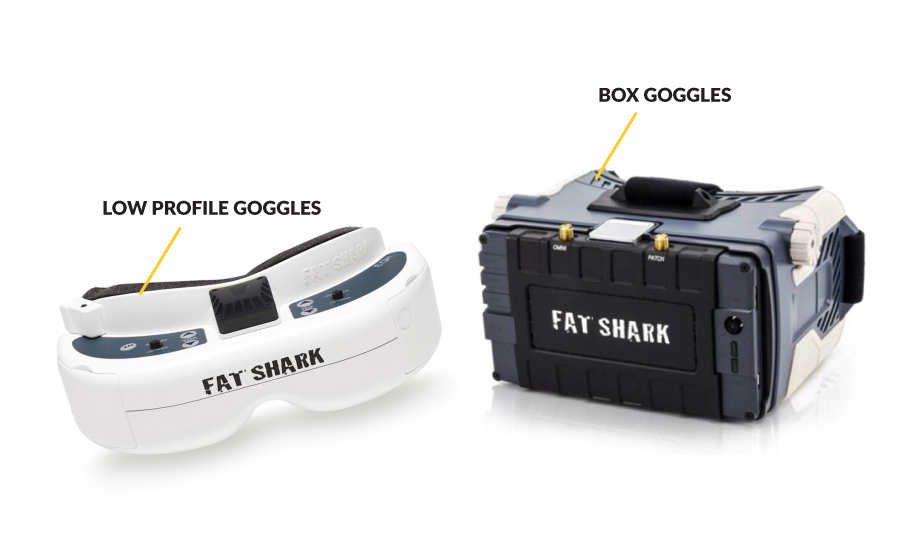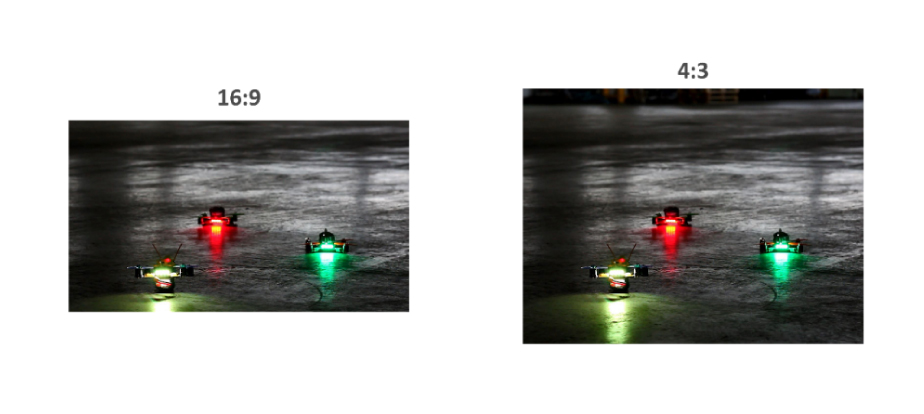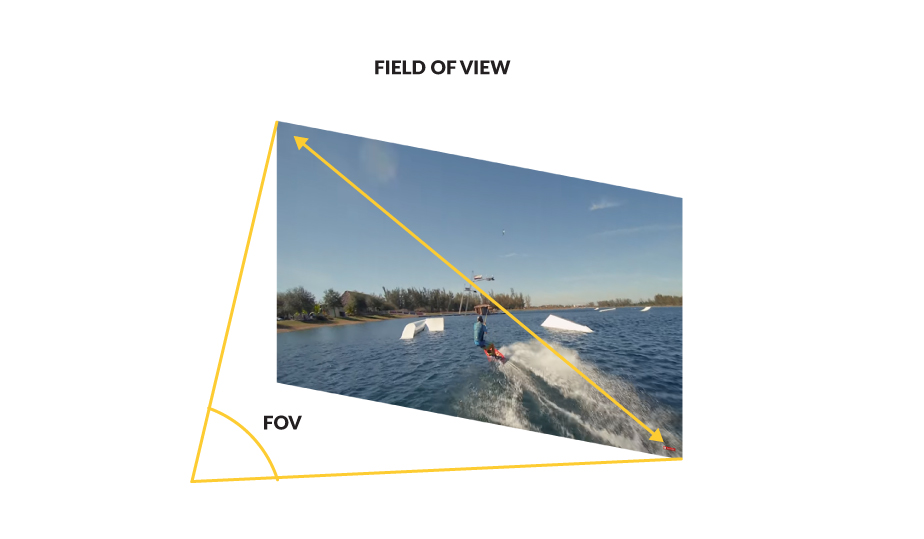All About Multirotor Drone FPV Goggles and Monitors
Drone FPV Goggles or Screens are the devices used by pilots to observe the live
video feeds being transmitted from their quadcopters. FPV viewing devices come
in a variety of sizes, feature sets, and price points. It is crucial to choose an FPV
viewing device fit for your application as it is essentially your interface into the FPV world.
This article will discuss the various types of FPV viewers and a series of
relevant specifications and features to keep in mind when selecting your viewer.
Because goggles are significantly more common than monitors,
most topics will discuss them in greater depth.
How Drone FPV Goggles and Video Receivers work together
The video receiver (VRX) receives a quadcopter’s constant video transmission
and converts the oscillating radio waves into electrical signals that conforms
to either the PAL or NTSC analogue video formats. The Drone FPV Goggles,
onnected to the VRX either internally or externally, receives analogue video signals
and converts them into an image displayed on the screen(s). The displayed image
updates at 25-30 frames per second creating a live video feed from the quadcopter’s
camera. Most goggles have a VRX integrated into them or the ability to fit one into
a module bay. It is also quite common for goggles to have an integrated video input jack
enabling connection to a seperate VRX using an analogue video (AV) cable.
This is useful for long range flying as a VRX mounted on a tripod prevents the
antennas from moving when the pilot moves their head.
Types of Drone FPV Goggles
The Drone FPV Goggles used to pilot aircraft fit into the two main categories:
box goggles, and low profile goggles (usually referred to as just ‘goggles’).
Goggles can be purchased with either one screen or two. In most cases, box style
goggles utilize one screen compared to low profile goggles which contain two.
Dual screen goggles incorporate a pair of micro liquid crystal displays (LCD) up to half
an inch in size to display a duplicated FPV image on each. These goggles are usually more
expensive than single screen box goggles due to the high manufacturing costs associated
with the production of their micro LCD’s. When combined with custom magnification optics,
the miniature LCD’s can be placed closer to the user’s eyes allowing the goggles design to be
relatively compact and low profile. Single screen goggles cover the majority of box style goggles.
Single screen goggles are significantly cheaper to produce as their 4-8” monitors have a
significantly lower manufacturing cost, compared to micro LCD’s, due to the reduced precision
and manufacturing tolerance requirements. Although box goggles and monitors tend to be the
cheapest FPV viewing options, low profile goggles are the preferred option by the
FPV community due to the extra convenience of the reduced form factor and weight.
Aspect Ratio and Resolution
Drone FPV Goggles and monitors can be purchased in the aspect ratios of 4:3 or 16:9.
See the below image for a screen ratio comparison. Preferred aspect ratio is quite subjective
however 4:3 is the most common for the reason that most FPV cameras transmit a 4:3 image
(16:9 cameras are available although they are less common). The 16:9 image ratio is also
quite common for goggles, however, a quadcopter transmitting an image from a 4:3 ratio
camera will result in a stretched image being displayed on the goggles. The rising quantity of
digital HD downlinks has also increased the popularity of 16:9 goggles as it provides a more
|cinematic view from the quadcopter. Goggles and monitors also come in a variety of resolutions
commonly ranging from 320×240 pixels to 1280×720 pixels. For most analogue applications,
an 800×600 resolution 4:3 ratio screen is the highest resolution required as the analogue
video protocol transmits with a resolution of 720×576 in the PAL format (the most commonly
used format worldwide) and 720×486 in the NTSC format (the most commonly used format
in America). For digital FPV applications, 720P HD video(meaning 720 pixels vertically) is
the most common image quality meaning that a 1280×720,
16:9 display would be the ideal screen to use.
Field of View
Field of view (FOV) is the angle between the diagonals of the FPV screen and the eye
observing them. The below image demonstrates the FOV angle. The FOV of different Drone
FPV Goggles can range from 25 degrees, up to 80 degrees. For box goggles, the usual FOV
ranges from 50-80 degrees and for low profile goggles, the FOV ranges from 25-50 degrees.
The ideal FOV is quite subjective however any angle below 30 degrees is quite difficult to fly with.
When racing, pilots usually prefer a FOV ranging from 30 degrees to 50 degrees with 42 degrees
being the most common as it allows the pilot to view the entire image without requirement to
excessively move their eyes around the picture. For freestyle, a FOV of 40-50 degrees is quite
common as the image is sized such that fine details (e.g. thin tree branches) are large enough
to be visible and the picture is relatively immersive without forcing the pilot to look around the
screen an excessive amount. Box goggles provide the most immersive experience with a FOV
range of 50-80 degrees. This can be ideal for long range pilots or people using
cameras with extremely wide viewing angles.
New Drone FPV Goggles Technologies
Due to the increasing popularity of FPV and virtual reality, the technology implemented
into the FPV goggles is constantly evolving and improving. The most noticeable improvements
come from the optics and micro LCD screens which have gradually developed to provide
greater contrast, colour, pixel density and reduced image distortion. These technology
improvements become especially apparent when directly comparing a new set of slim
profile goggles to a pair from five years ago. With the constant microchip size and price
reductions, goggle manufacturers are also able to provide users with many integrated features
for increasingly more affordable prices. Many of these will be later discussed. An increase in
goggle manufacturers has also promoted further technology innovation as each manufacturer
strives to create products with increasing refinement and feature sets.
Features to consider
When purchasing a set of goggles, there are many desirable features to consider which
can increase the functionality and user experience. The most common features are summarized below:
Audio. Certain analogue and digital FPV systems transmit audio which can be
heard if the monitor/goggles has an inbuilt speaker or audio jack.
Audio increases immersion however its use is subjectively based on pilot preference.
HDMI input. An HDMI display port allows monitors/goggles to be interfaced with
a computer or digital FPV system. It can be quite useful for FPV training as it allows
flight simulation computer programs to be played using the goggles, increasing the
parallels between flying in simulation and reality.
Digital video recording (DVR). A digital video recorder (DVR) allows the video
feed to be recorded onto an SD card mounted into the monitor/goggles.
This feature is particularly useful as the video can be played back to review
a race circuit or to observe where a quadcopter has crashed.
Adjustable aspect ratio. Some FPV viewing devices have the option to switch
between a 16:9 and 4:3 aspect ratio. This is particularly useful if a pilot’s fleet
contains quadcopters with 4:3 and 16:9 cameras or if switching between
digital and analogue FPV systems.
Head tracking. Head tracking is quite uncommon for FPV quadcopters but
is more widely used with long range FPV planes. A head tracker mounted in the
goggles allows a camera gimbal mounted on the aircraft to move in the direction of
your head movements and essentially allows you to ‘look around’ your FPV aircraft.
Faceplate fan.Low profile goggles can be prone to optics fogging in hot or cold climates.
The addition of a fan prevents fogging by blowing a small quantity of air onto the optics.
This feature is extremely useful and highly recommended to look for in a pair of goggles.
Adjustable interpupillary distance (IPD). Most dual screen goggles have the
ability to adjust the distance between their screens to match the distance
between the users pupils. This feature is also highly recommended for low
profile goggles as it allows the user to move the optics to their
most preferred location, increasing the devices comfort.
Diopter lense slots/adjustable magnification.Most goggles have the ability
to add additional diopter lenses or to adjust the screen magnification as it is often
not possible or difficult to wear glasses with low profile or box style goggles respectively.
Diopter lenses or adjustable image magnification allows short and long sighted pilots to
use FPV goggles without experiencing a blurry image. Third party companies also exist
who can manufacture custom prescription diopter lenses for pilots using low profile goggles.
3D FPV capability.Most low profile goggles and some box goggles are able to
view 3D FPV video feeds in the scenario that a 3D FPV camera is used. Whilst this
is quite uncommonly used, it is quite a unique experience,
especially when combined with audio.
Don’t fry your Drone FPV Goggles!
Low profile goggles employ high magnification optics to allow the user to view the
micro LCD screens without eye strain. As well as magnifying the screen, these optics
can also focus sun rays onto the micro LCD screens which can burn them turning screen
fragments white. It is good practice to keep low profile goggles on your forehead or in their
carry case when not in use to prevent any LCD burning from occuring.
Conclusion
FPV goggles are an essential part of the hobby and you should now be able to use the
information from this article to make an informed decision. If you are having trouble choosing
a set of goggles, take a trip to a local FPV club and ask the members for their recommendations
and even try on a set. Goggles are your interface into the FPV world so make sure to select a
pair that is of both decent quality and comfort.
